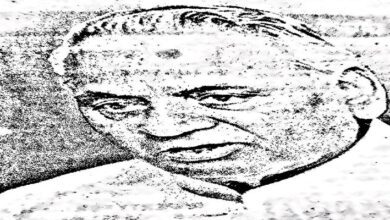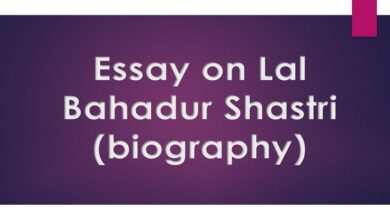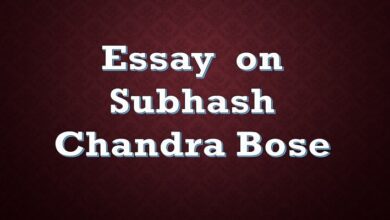Essay on APJ Abdul Kalam in English 1000 Words | PDF
Essay on APJ Abdul Kalam
Essay on APJ Abdul Kalam in English (Download PDF) – APJ Abdul Kalam was born on 15 October 1931, he was the President of India. He was a well-known scientist along with the former President of India. Kalam was an engineer and also progressed in scientific life after engineering.
Kalam taught that if there is any situation in life, if you decide that you want to fulfill your dream, then you can definitely fulfill it. He played a key role in DRDO for four decades as a scientist and also handled ISRO.
APJ Abdul Kalam played an important role in India’s civil space program and in the development of military missiles. These are known as missile men in India. He played a pivotal role in India’s Pokhran nuclear test in 1998, the second time since India’s first nuclear test in 1974.
He was playing his role politically and technically in this nuclear test. Kalam received good support from both the Bharatiya Janata Party and the Indian National Congress Party.
After which he became the President of India in 2002, after his 5 years of service, he played his role in education writing and public support. Dr. A. P.J. Abdul Kalam has been awarded the Bharat Ratna.
APJ Abdul Kalam’s Birth
APJ Abdul Kalam was born into a Muslim family on 15 October 1931 in Dhanushkodi village which is located in Rameswaram Tamil Nadu. His father’s name was Zainulabdeen, he was not well educated and had no money. APJ Abdul Kalam’s father used to rent a boat to a fisherman.
He was born into a joint family, the family member number can be estimated as having five brothers and five sisters in total. There were 3 more families in the house, Abdul Kalam’s life was greatly influenced by his father.
His father was not well educated, but his dedication and the rites he gave were very useful for Abdul Kalam. APJ Abdul Kalam was given the initiation award by the Panchayat of Rameswaram at the age of 5 on behalf of the primary school.
APJ Abdul Kalam used to say that one of his pictures, titled Iyadurai Solomon, said that in order to achieve success and favorable results, the mind must have the will, faith, and power to achieve them.
When his teacher was telling him about flying birds, then no student understood his point. He then explained the example of birds flying by taking them to the banks of the pond.
Then Kalam had considered that he would go into the field of aviation science. He used to take extra tuition in the morning from a mathematics teacher, he used to go for tuition at 4:00 pm.
Read also- Essay on Jawaharlal Nehru
APJ Abdul Kalam Education
APJ Abdul Kalam was very intelligent from childhood. He received the initiation award in primary school by Rameswaram Panchayat. When he was just 5 years old, he did the work of distributing newspapers along with his studies.
APJ Abdul Kalam graduated in astronomy from Madras Institute of Technology in 1950. After his graduation, he also worked on the Haver Craft project.
He entered the Indian Defense Research and Development Institute during this work. APJ Abdul Kalam joined the Indian Space Research Organization in 1962, where he successfully played many roles in many satellite launch projects.
He served as a director in these projects and was instrumental in the construction of India’s first indigenous satellite launch vehicle SLV-3. He successfully completed testing of the Rohini satellite in July 1882.
APJ Abdul Kalam as a Scientist
APJ Abdul Kalam joined the Indian Space Research Organization in 1972 and became the Director-General of Kin. He achieved this by building SLB3, the first indigenous satellite in the Indian Space Research Organization. In 1980, he worked to take the Rohini satellite to Earth.
It became a member of the International Space Club after its successful testing. He was credited for bringing the vehicle program launched at ISRO. Kalam designed the Target Control Missile.
Kalam conducted a nuclear test in Pokhran for the second time. In this way, India was successful in providing nuclear testing equipment for nuclear tests.
Abdul Kalam had given India state-of-the-art thinking in the field of science by 2020 at the development level. APJ Abdul Kalam used to advise the Government of India as a scientific advisor. He was appointed as the Scientific Advisor in the Indian Ministry of Defense in 1992.
APJ Abdul Kalam as a President
He was the President of India and received good support from both the Bharatiya Janata Party and the Congress Party, due to which he became the President of India in 2002. He was made President on 18 July 2002 and was sworn in at Rashtrapati Bhavan on 25 July 2002.
Prime Minister Atal Bihari Vajpayee and members of the cabinet were also present at the function. Their program ended on 25 July 2007. APJ Abdul Kalam was a cooperative person and a very discipline-loving person. He wrote the book Wings of Fire in his life, which provides guidance to the youth.
He wrote his second book Guiding Souls Dialogues of the Purpose of Life, in which he wrote very spiritual thoughts. APJ Abdul Kalam also wrote poems in the Tamil language. His books are believed to be in great demand and much preferred in South Korea.
Read also – Essay on Bhagat Singh
Death :
APJ Abdul Kalam died on the evening of 27 July 2015. He was giving a speech this evening on making the Indian Institute of Management liveable in Shillong and then suffered a massive heart attack and fainted.
He was in critical condition at around 6:30 pm and was taken to Bethany Hospital and admitted to the ICU and died 2 hours later.
CIO John Silo of the hospital said that when he was brought to the hospital, both his blood pressure and pulse had left. Around 9 hours before his death, he tweeted that he was going to lecture at Shillong IIM.
APJ Abdul Kalam would have been 84 years old in October 2015, but he died before that.
APJ Abdul Kalam Funeral
After the death of APJ Abdul Kalam, Kalam’s body was brought to his Guwahati by an Air Force helicopter. On 28 July, the body of former President APJ Abdul Kalam was brought from Air Force aircraft c130g Herkulis to Delhi.
By about 12:15 pm, the aircraft had reached Palam Airport in Delhi. The security forces had honorably lowered the body of APJ Abdul Kalam with respect.
At that time there were Prime Minister Narendra Modi and President Pranab Mukherjee and Delhi Chief Minister Kejriwal as well as the chief of the 3 armies received it and offered flowers to his body.
Later, after offering flowers, the body of APJ Abdul Kalam was wrapped in a tricolor, he was placed in a gun carriage and taken to the residence at 10 Rajaji Marg. Former Prime Minister of the country Manmohan Singh, Congress President Sonia Gandhi, Rahul Gandhi, Uttar Pradesh Chief Minister Akhilesh Yadav, and many leaders paid tribute to APJ Abdul Kalam.
The Government of India also announced a seven-day state mourning of the former President’s death as his honor. 30 July 2015 the body of APJ Abdul Kalam was buried with full honors at P Karumbu Gardens in Rameswaram.
More than 3,55,000 people attended the last rites, including the Prime Minister, the Governor of Tamil Nadu, and the Chief Minister of Karnataka, Kerala, Andhra Pradesh. The biography of APJ Abdul Kalam affects many youngsters in India.
A. P. J. Abdul Kalam was a man of good thinking and belief in deeds. APJ Abdul Kalam in his book The Wings of Fire has described the things that inspire the youth. Today, the entire nation is proud of a President who was playing an important role in a scientific post along with the reins of the country.
Download PDF – Click Here
FAQs. on APJ Abdul Kalam
When was APJ Abdul Kalam born?
Ans. APJ Abdul Kalam was born into a Muslim family on 15 October 1931 in Dhanushkodi village which is located in Rameswaram Tamil Nadu. His father’s name was Zainulabdeen
What was the role of Kalam in developing India?
Ans. Kalam played an important role in India’s civil space program and in the development of military missiles. These are known as missile men in India. He played a pivotal role in India’s Pokhran nuclear test in 1998, the second time since India’s first nuclear test in 1974




